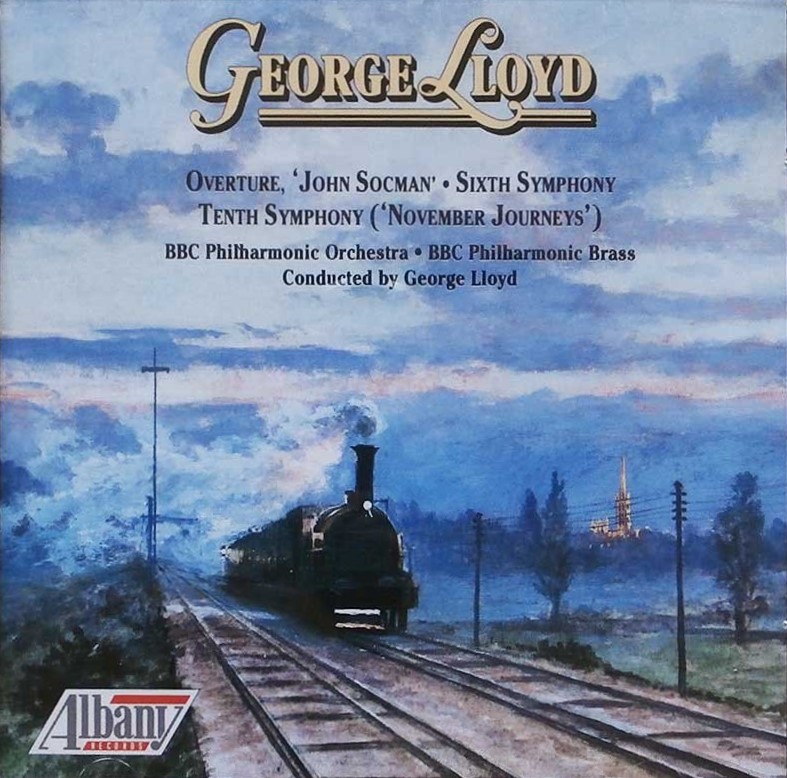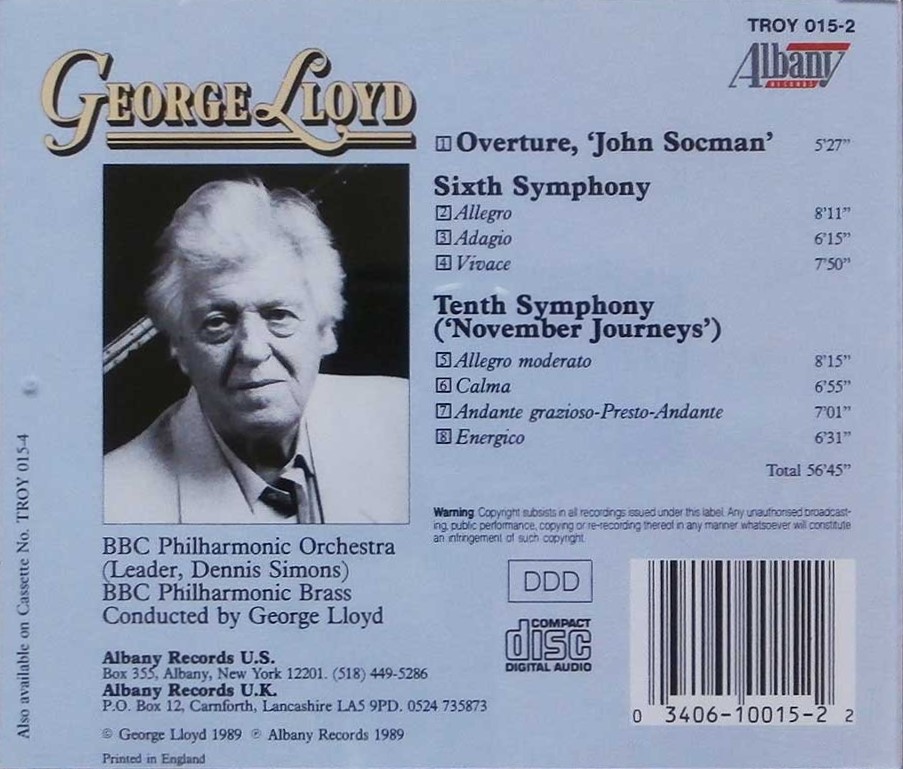If the two previous symphonies (BLOG) from George Lloyd were weighty affairs due to their length and musical material, the ones on review here are rather compact and upbeat in comparison.
The opening flourish of Symphony no. 9 should clue in the lightheartedness Lloyd chooses to pave for these smaller works. I am noticing the composer really seems to like a frothy Scherzo feel as well, although he varies it here with sweeping Romanticisms, and some nostalgic-sounding string solos at its end. A delight from start to finish!
Contrastingly, there are some grouchy punctuations in the gloomy middle movement. I daresay his string lines and wind solos are a little craggier too, giving into Lloyd's more serious temperament he explored in the two earlier symphonies, evinced in the rather dissonant brass and heavy, atmospheric mood.
The outer movement continue the use of mallet percussion, giving his music a bright texture. There is a little more British pomp in this last movement, explored through brass-ensemble statements, plus Lloyd's happier, almost folk-like setting sends the listener off on a complete symphonic experience.
The BBC is not perfect here, I caught some loose ensemble moments, but the vast majority of this recording is excellently led by Lloyd himself, with his efforts recorded by the dedicated Albany Records.
Symphony no. 10 is subtitled 'November Journeys', so named for his jaunt to various cathedrals. This symphony is different in its scoring for brass only, so many will consider this entry from Lloyd standing outside of his typical symphony oeuvre.
With his Tenth Symphony, Lloyd returns to a traditional four-movement symphony structure, one he hasn't used since his Symphony no. 4 'The Arctic'. The preponderance of brass puts his music in the tradition of Vaughan Williams, Holst, and Elgar, who all at some point wrote for brass bands, and Lloyd himself will contribute quite a bit to the genre again later in life.
To my ears, there is a bit of the circus in the first movement, although the composer's unusual harmonic movement and rhythmic settings keeps his symphony away from anything so coarse. I often hear echoes of John Williams in his use of horns, affording a slight cinematic landscape to this music's soundscape.
Some of the solo brass features in the slow movement exhibit quicker vibrato reminiscent of the British brass band tradition, not a favorite sound of mine. Thankfully, that technique isn't used for the whole ensemble, as I don't care for that sound, and the BBC brass play it straight.
The third movement plays with both slow and quick tempoed textures, the latter using quirky muted-brass timbres amidst tricksy rhythms.
It comes as no surprise to this listener that Lloyd sends the listener off in a grand fashion, however, he does so in a startlingly modernist way at the beginning, with surprising dissonance and angularity. Perhaps it is in a effort to make his later melodic setting more effective.
This symphony doesn't end up being one of my favorites, but I greatly appreciate George Lloyd's inventiveness and willingness to work outside the box.
Again, Lloyd leads the BBC Philharmonic Brass section in the Tenth Symphony. This one has some fair recorded competition, yet I always take to Lloyd's own recordings as authoritative in general.
Works
Symphony 9 (28.46)
Symphony 10 (28.42)
Performers
BBC Philharmonic Orchestra
BBC Philharmonic Brass
George Lloyd, conductor
Label: Albany
Year: 1989-91
Find more Lloyd recordings HERE!





No comments:
Post a Comment